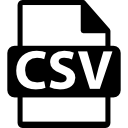Full Data Package |
Data Dictionary |
|||
|---|---|---|---|---|
Create new odc-sci Account and/or log in to download the file. |
||||
Comparing the effect of skilled forelimb rehabilitative training after unilateral cervical contusion and dorsal quadrant spinal cord injury in female Lewis ratsDOI:10.34945/F5DS3CDATASET CITATIONFouad K., Lucas Osma A. M., Vavrek R., Fenrich K. K., Bennett, D. (2022) Comparing the effect of skilled forelimb rehabilitative training after unilateral cervical contusion and dorsal quadrant spinal cord injury in female Lewis rats. ODC-SCI:747 http://doi.org/10.34945/F5DS3CABSTRACTSTUDY PURPOSE: Moderate cervical spinal cord injury (SCI) models target spinal tracts involved in skilled reaching and grasping. Contusion SCIs are often considered the most clinically relevant injuries. They involve lateral gray matter damage and it is unknown whether rats with a cervical contusion can be trained in skilled reaching and grasping task (single pellet reaching, grasping and retrieval; SPRGR). Here we compare the impact of injury size on recovery in a SPRGR task, in rats with cervical unilateral contusion injuries (UCs) with a dorsolateral quadrant transection (DLQ).DATA COLLECTED: Age matched adult female Lewis rats (n = 26 UC and n = 13 DLQ; 200–230 g; Charles River, Canada), were trained to retrieve food pellets. Untrained controls were placed in the training enclosures and received pellets on the floor of the enclosure where they could be licked rather than grasped. Following pre-training 5 days/week, for 6 weeks and baseline testing of the preferred paw all rats received a cervical SCI between C4-5 on the side of the preferred paw For DLQ injuries a dorsolateral quadrant SCI was performed using custom made blades. UC animals received a C5 unilateral contusion, with the tip of the impactor device (2.5 mm diameter, IH-0400 Impactor, Precision Systems and Instrumentation) over the spinal cord at 1.25 mm lateral of the midline. Impact force was set to 125 Kdyn with no dwell-time. Starting 1 week post-injury, rats were divided into untrained and trained groups based on day 4 forelimb injury severity score. A blinded researcher evaluated performance in the trained task at 1, 3, and 5 weeks of training from 10 min videos. After the final day of testing, rats were euthanized, perfused, and spinal cord tissue was harvested. Cervical spinal cords including the lesion site were cut at 25 microns and processed with Cresyl violet and Neurotrace staining. Cresyl violet-stained spinal cord sections were assessed for lesion size using light and fluorescence microscopy. Tissues sections (25 µm) were imaged and quantified, every 200 µm from 2.4 mm rostral to 2.4 mm caudal of injury epicenter, to assess tissue damage. Using ImageJ the corticospinal tract (CST) and the rubrospinal tract (RST) damage was quantified based on the reported projection sites.CONCLUSIONS: Both UCs and DLQs cause considerable damage to spinal tracts that are important for skilled forelimb movements. UCs lead to significantly more ventral and dorsal grey matter damage, as well as more ventral white matter damage than DLQs. UCs result in severe motor impairments in the reaching task soon after injury, yet there is some spontaneous recovery over time and training is effective in promoting additional recovery in the task. We conclude that the unilateral C5 contusion model is a suitableto evaluate the efficacy of training and other plasticity promoting treatments in rats.KEYWORDSSpinal cord injury, Unilateral contusion, Dorsolateral quadrant transection, Grey matter loss, Corticospinal tract, Rubrospinal tract, Single pellet reaching, Forelimb motor task, Skilled motor task, Functional recovery, Rehabilitative training, NeuroplasticityPROVENANCE / ORIGINATING PUBLICATIONS
RELEVANT LINKSNOTES |
DATASET INFOContact: Fenrich Keith (fenrich@ualberta.ca)Lab: Keith K Fenrich
|
|




